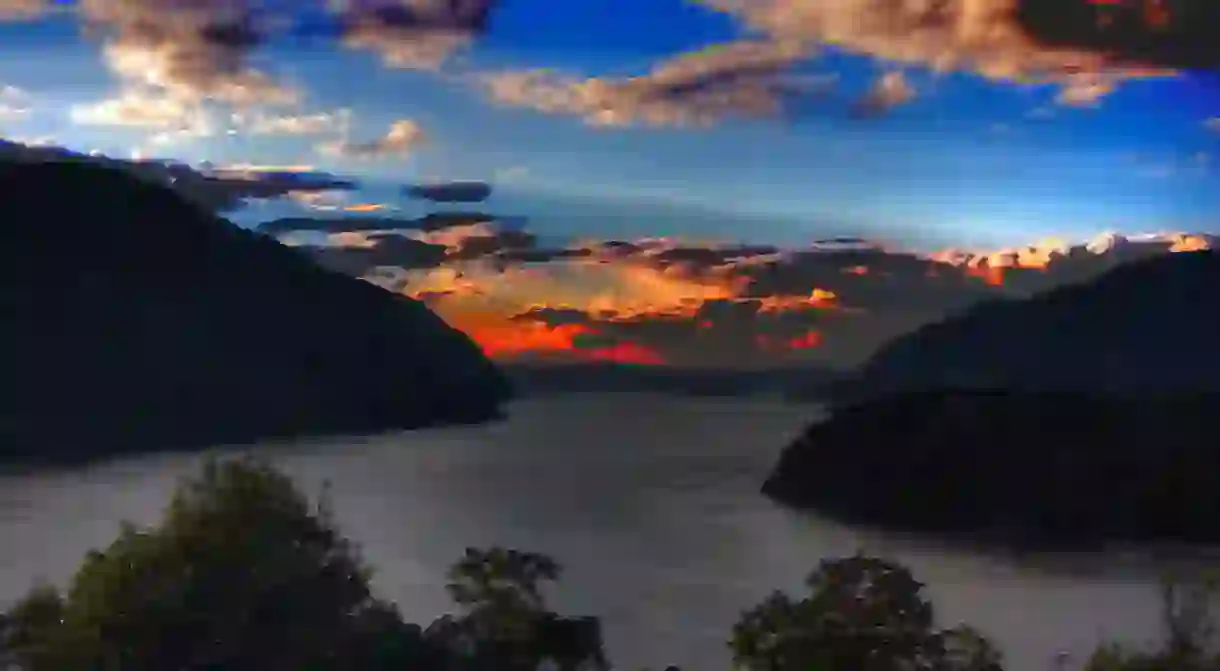Top 7 Hiking Trails In America’s West

Throughout the history of America, the West has been a source of legend and wonder. It’s the site of our Manifest Destiny, a place of palatial forests and immense cliffs, the home of cowboys, bright stars, and howling coyotes. But really, when it comes down to it, the West is a great place to hike. Yes the West is huge. It can be hard to figure out where, exactly, one should strike out for a mind-blowing hike. Other than tropical jungle, there’s every type of terrain imaginable. There are rainforests, high deserts, mountains, canyons, plains, and even an entire landscape of nothing but lava rock called ‘Craters of the Moon’. Don’t let size and variety discourage you. Here are the best hikes to get you on your way to exploring the western United States.

Grinnell Glacier: Glacier National Park, MT
They don’t call Glacier National Park the ‘Crown of the Continent’ for nothing. It’s a hiker’s paradise, with over 700 miles of trails. Here is one of the most spectacular hikes in the West. Why? It’s a chance to view a rapidly disappearing sight: Grinnell Glacier. There are two choices for this hike. Either start at the Grinnell Glacier Trailhead, or shuttle across Swiftcurrent Lake and Lake Josephine. The shuttle cuts off 3.4 miles of the hike, for a hike that totals 7.6 miles.
Along the way to Grinnell Glacier is the stunning Grinnell Falls rushing from Grinnell Lake down the headwall. Through the alpine meadows one can gaze out at the 9,553 foot Mount Gould, and Gem Glacier, home to the famous Grinnell Glacier, which was discovered by the founder of Audubon Society, George Grinnell.

Half Dome: Yosemite National Park, CA
A permit is necessary for the cable section of the trail. It’s worth considering, seeing as Half Dome is a phenomenal hike. There’s a reason for the cable section—the dome is steep. At 14 miles, this hike is very difficult. Warning: people have died attempting this, both with and without the cables. For the brazen, it’s well worth it.
Start from the Mist Trail at dawn, ascend 900 feet past gigantic Vernal waterfall, and then Nevada Fall. Wear hiking boots with good traction. Bring at least a gallon of water. After the sub-dome you’ll have reached the cables. Grip them tightly and take your time. At the top of Half Dome are the most stunning views. Do not attempt this hike in rainy weather.

The Lost Coast Trail: King Range National Conservation Area, CA
The Lost Coast Trail covers a distance of 25 miles, so be prepared for a multi-day event. It’s epic. From Mattole Trailhead in Northern California the historic Punta Gorda Lighthouse can be visited, then comes the coastline on soft sand and rocky beaches, and private beaches where it’s possible to camp. There’s also redwood groves, fern grottoes, and rugged overlooks of the Pacific. Before the southern Usal trailhead, a bluff with a vista over one-thousand feet above the ocean provides whale-spotting opportunities.

Zion Narrows: Zion National Park, UT
This hike tops many a list—there’s nothing like it. Just be prepared to test the water. The Narrows of Zion National Park is the North Fork of the Virgin River, where the canyon walls close in, and the river becomes your trail. In the Wall Street section, hikers are walled in by 600 feet of sheer red rock, shielded from the sun, wading through the cool water – this is great on summer days. You’ll need a permit for the two longer, top down hikes. But the more casual bottom up hike, starting at Temple Sinawava and ending at Big Springs, doesn’t require a permit and is a delight. Waterproof shoes and hiking staffs are highly recommended and necessary to help keep your footing on the slick river bed.

Pacific Crest Trail: Devils Lake, OR
The entire Pacific Crest Trail extends from E.C. Manning Provincial Park in Canada to the border of Mexico. That’s the type of trip to test anyone’s abilities. But without a whole five months to spend it might be better to try the 17 miles of trail stretching through the superb scenery of Oregon’s Three Sisters Wilderness. Start from the Fog Camp/Obsidian Trailhead on State 242. End at the South Sister Trailhead at Devils Lake. There are fir forests, waterfalls, alpine lakes, and the Obsidian Limited Entry area, covered in sharp black obsidian rock.

Hoh River Trail: Hoh Rainforest, Olympic National Park, WA
At 31 miles, the Hoh River Trail hike is a 3-day event that will introduce hikers to the incredibly lush rainforest eco-system. Towering moss-covered cedars, spruce, and fir trees rise out of a verdant bed of moss and ferns. Hikers will find plenty of places to camp along the way to the base of Mount Olympus. There the gorgeous Blue Glacier can be taken in. Equip yourself for rain rain. And there’s a lot of wildlife, including elk and black bears. Black bears and other critters are attracted to food at campsites, so consult information on protecting your campsite.

South Kaibab Trail: Grand Canyon National Park, AZ
On the South Kaibab Trail lies the Grand Canyon scenery that is beyond comparison. The majority of this hike ushers its trailblazers along the top of a ridge looking out on the mesas of the canyon. It’s 6.5 miles, with some strenuous switchbacks, so hydration is essential. Guides recommend taking this route before 10 or after 4 to avoid peak heat. Midway through, Ooh Aah Point provides sheer visual magnificence. Approaching O’Neill Butte, Cedar Ridge offers an incredible panorama of desert canyon contours; Easel and paints are not essential, but recommended.













